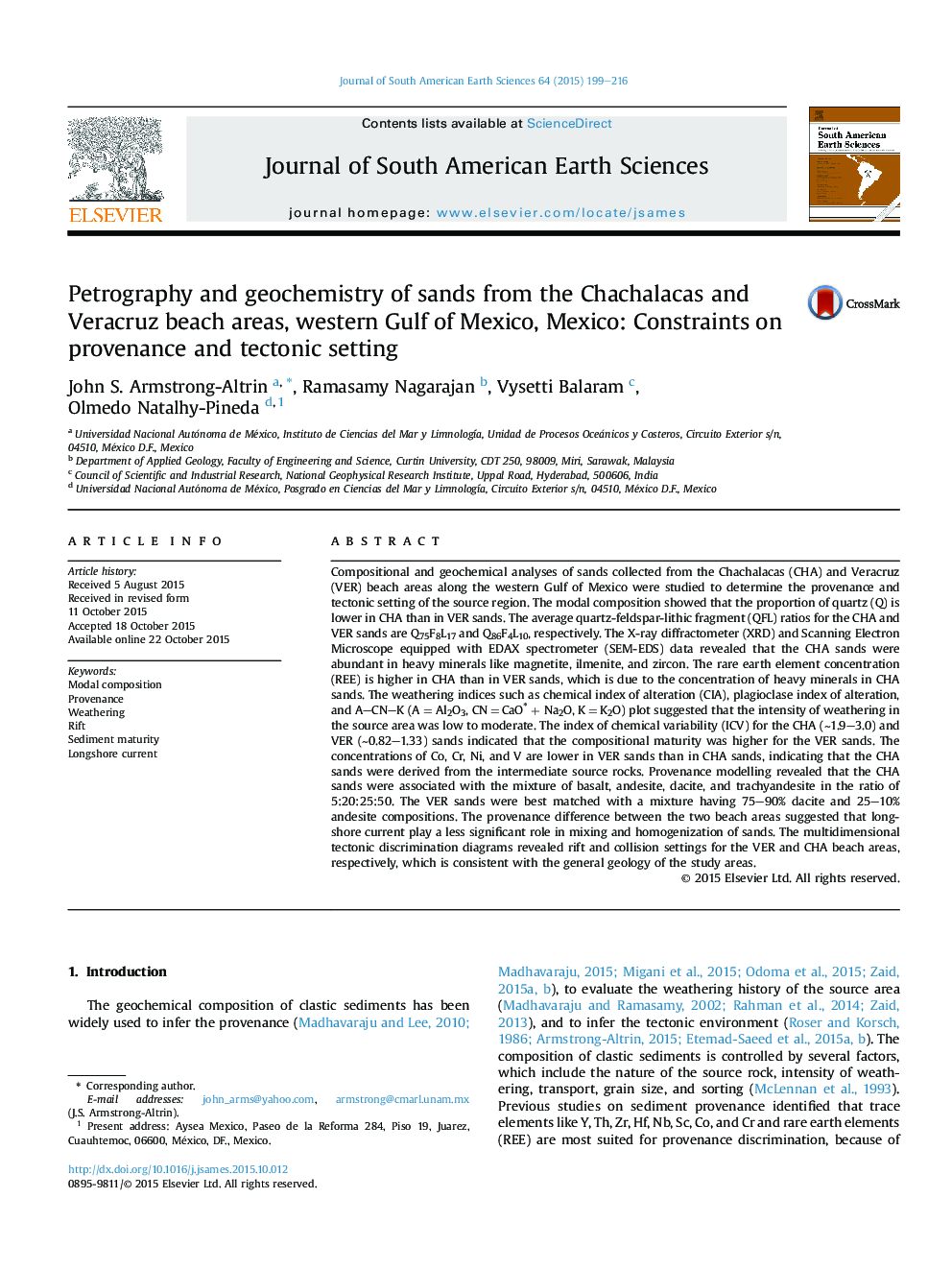| کد مقاله | کد نشریه | سال انتشار | مقاله انگلیسی | نسخه تمام متن |
|---|---|---|---|---|
| 4682119 | 1348894 | 2015 | 18 صفحه PDF | دانلود رایگان |

• The composition of sands from the Chachalacas and Veracruz beach areas of the western Gulf of Mexico were investigated.
• The beach sands were derived from low to moderately weathered source rocks.
• This study identified that the longshore current in the mixing and homogenization of the beach sands is not significant.
Compositional and geochemical analyses of sands collected from the Chachalacas (CHA) and Veracruz (VER) beach areas along the western Gulf of Mexico were studied to determine the provenance and tectonic setting of the source region. The modal composition showed that the proportion of quartz (Q) is lower in CHA than in VER sands. The average quartz-feldspar-lithic fragment (QFL) ratios for the CHA and VER sands are Q75F8L17 and Q86F4L10, respectively. The X-ray diffractometer (XRD) and Scanning Electron Microscope equipped with EDAX spectrometer (SEM-EDS) data revealed that the CHA sands were abundant in heavy minerals like magnetite, ilmenite, and zircon. The rare earth element concentration (REE) is higher in CHA than in VER sands, which is due to the concentration of heavy minerals in CHA sands. The weathering indices such as chemical index of alteration (CIA), plagioclase index of alteration, and A–CN–K (A = Al2O3, CN = CaO∗ + Na2O, K = K2O) plot suggested that the intensity of weathering in the source area was low to moderate. The index of chemical variability (ICV) for the CHA (∼1.9–3.0) and VER (∼0.82–1.33) sands indicated that the compositional maturity was higher for the VER sands. The concentrations of Co, Cr, Ni, and V are lower in VER sands than in CHA sands, indicating that the CHA sands were derived from the intermediate source rocks. Provenance modelling revealed that the CHA sands were associated with the mixture of basalt, andesite, dacite, and trachyandesite in the ratio of 5:20:25:50. The VER sands were best matched with a mixture having 75–90% dacite and 25–10% andesite compositions. The provenance difference between the two beach areas suggested that longshore current play a less significant role in mixing and homogenization of sands. The multidimensional tectonic discrimination diagrams revealed rift and collision settings for the VER and CHA beach areas, respectively, which is consistent with the general geology of the study areas.
Figure optionsDownload as PowerPoint slide
Journal: Journal of South American Earth Sciences - Volume 64, Part 1, December 2015, Pages 199–216